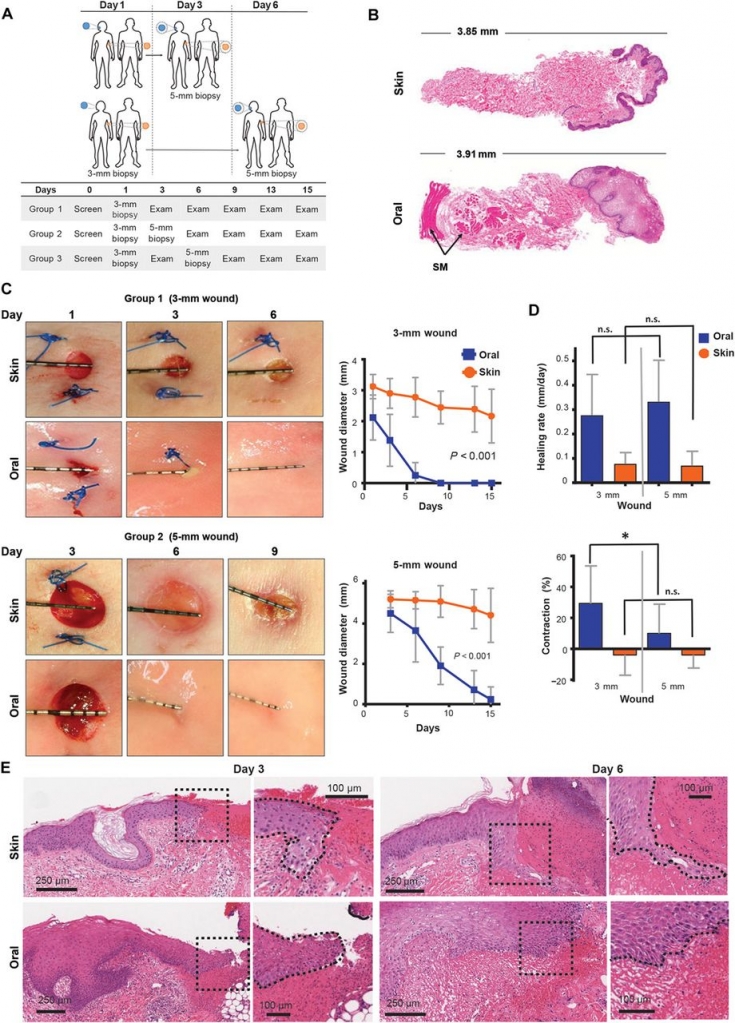Researchers have found that the cells in the oral cavity are able to repair by activating cell migration and production of key molecules.
The authors suggest that the work on revealing the secrets of rapid restoration of the oral mucosa will allow us to get closer to the goal of the fastest possible healing of skin wounds, postoperative scars, and trophic ulcers in diabetes mellitus.
The article estet-portal.com will tell about the secrets of fast healing of wounds in the oral cavity and confirm the prospects of this area of research.
Experimental confirmation of rapid wound healing
A study was conducted under the direction of Maria Morasso, PhD, from the National Institute of Arthritis, Musculoskeletal and Skin Diseases, National Institutes of Health in Maryland, USA, to compare the healing process in the mouth and skin.
Scientists tarvated the oral mucosa and skin of 30 healthy volunteers. As the wounds healed over the next 6 days, the team took baseline and serial paired oral and skin biopsies to characterize repair processes using RNA sequencing.
Follow us on Telegram
"Analysis of healing time showed that oral wounds resolved significantly faster than skin wounds (P < 0.01)," the researchers wrote in a paper published July 25 in Science Translational Medicine.

Key mechanisms for rapid healing of oral mucosal wounds
Samples taken from the mouth show that cells in oral wounds have different gene expression patterns, including suppression of inflammatory pathways.
Unlike the mucosa, there is a sustained activation of inflammatory pathways in the skin, which likely contributes to scarring.
The team also found that cells in the oral mucosa express higher levels of key transcription factors that regulate gene expression.
"In particular, we have identified transcription factors such as SOX2 (sex-determining region Y-box 2) and PITX1 (paired-like homeodomain 1) that play an important role in activating oral mucosal wound healing processes." , Morasso clarified.
Experimental confirmation of the prospects of the study
When the researchers bred mice that overexpressed the transcription factor SOX2 in the outer layer of the skin, they found that wound healing was much faster than a similar wound in control mice.
"The unique environment of the oral cavity has a wound healing program" said the first author of the report, Ph.D. Ramiro Iglesias-Bartolome.
This study proves the concept that skin cells can be reprogrammed for increased fibroblast migration and the ability to rapidly heal a wound. The weight of this study stems from the urgent need to develop more effective approaches to accelerate skin wound healing, given the global increase in chronic and non-healing wounds, especially in diabetic patients.
You may be interested in the article on our website estet-portal.com in the section "Plastic surgery": Peculiarities of skin wound healing in aesthetic surgery
Adapted from Medscape







Add a comment